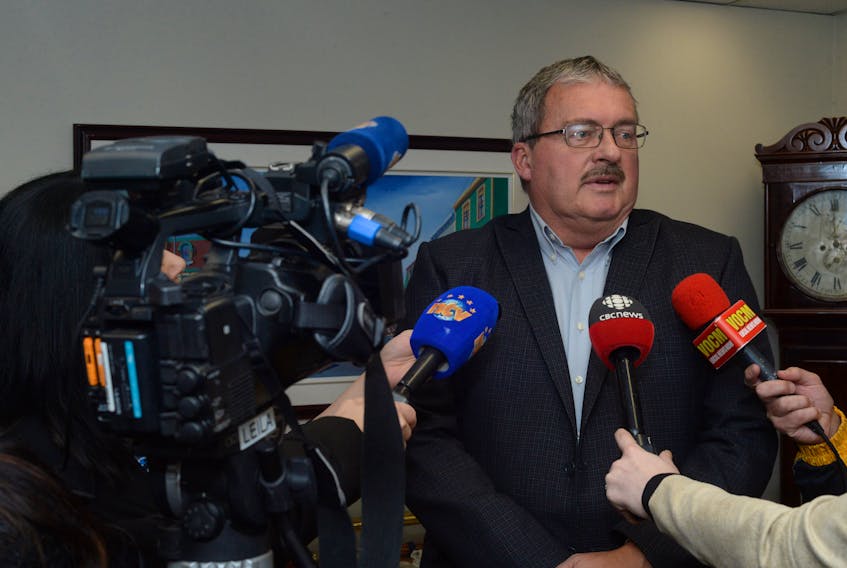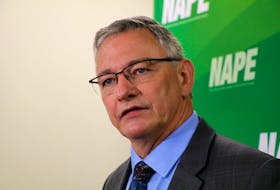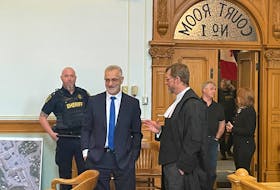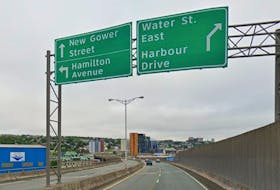Taxpayers in St. John’s will be on the hook for another $752,000 next year to help operate Mile One Centre and the St. John’s Convention Centre.
But it’s a case of spending money to make money, according to Coun. Sandy Hickman, who said the buildings provide key services for the public and bring in plenty of business to the city.
“We feel that as an economic generator, both buildings are important, as well as entertainment venues,” said Hickman, the city’s representative on the St. John’s Sports and Entertainment (SJSE) board of directors, adding that events at the buildings help fill hotel rooms and downtown businesses.
The pre-budget numbers for the buildings — as well as those for Metrobus — were provided to reporters at St. John’s City Hall Tuesday, “so that we could be transparent,” Hickman said.
Overall, in 2019, the city will provide SJSE — which operates Mile One and the convention centre — with $2.9 million, including $500,000 for the regular capital expenditures.
That’s an extra $777,955 for Mile One compared to 2018, and $25,772 less for the convention centre, which has seen an increased number of events and a new food provider in Centerplate this past year.
While Mile One generates 74 per cent of its operating costs, it’s projected the city will need to cover the cost of the remaining 26 per cent. For the convention centre, the city pays 21.28 per cent in subsidized costs.
While the city now has two sports teams — the St. John’s Edge, competing in the National Basketball League of Canada, and the St. John’s Growlers of the ECHL — there are still hefty costs involved, Hickman said.
The increase in the overall subsidy for Mile One can be attributed to a few things, he explained — the first being the downturn in the economy.
“People are not attending as many events as they may have 10 or 15 years ago. So, we feel we’re going to budget a little more conservatively for income … more realistically.”
— Coun. Sandy Hickman
Revenue from corporate sponsorships has also decreased. Companies aren’t lining up to advertise or purchase corporate boxes as they did in the “heyday” about 10 years ago, he said.
“Using public funds, we have to be responsible,” Hickman said.
As for concerts at Mile One, he said geography, the under-7,000-seating capacity and big expense hinders this city from attracting big-name acts.
The city doesn’t seek big-name acts either, as it poses too much of a financial risk for the city, he said. Instead, it rents the building to concert promoters, while the city makes money on food and beverage sales.
Hickman said St. John’s fares better with such concerts as Bryan Adams and Blue Rodeo, as well as such events as last week’s “Thank you Canada” figure skating event.
The figure skating event, coupled with two Edge games, meant 20,000 people went through Mile One doors last week, he said.
“We’re a smaller building in a smaller city, further away,” he said. “We go out and get as much as we can.”
In order to see subsidies decrease in the future, he said, there would need to be “fairly full houses” for Edge and Growlers games at Mile One, as well as a few more special events.
Meanwhile, the overall budget for Metrobus and GoBus, a transit service for people with disabilities, remains unchanged for 2019 from 2018.

The 2019 projected operating grant for both transit services is $17.9 million.
Metrobus is subsidized by the city at 64.75 per cent, which is on par with most cities of similar size.
Revenues for Metrobus and GoBus include passenger fares, reimbursements from other municipalities receiving the service, including Mount Pearl and Paradise, and small government operating grants.
Metrobus delivers approximately three million rides annually, while GoBus delivers about 135,000.
“A big mission of mine is to drive ridership, to increase the number of people taking the bus,” said Coun. Ian Froude, who noted the city recently announced a review of the Metrobus and Go Bus system to make sure the system is running effectively and efficiently.
He said ridership increased 3.9 per cent between 2017 and 2018, growth he hopes will continue.
Twitter: @TelyRosie









